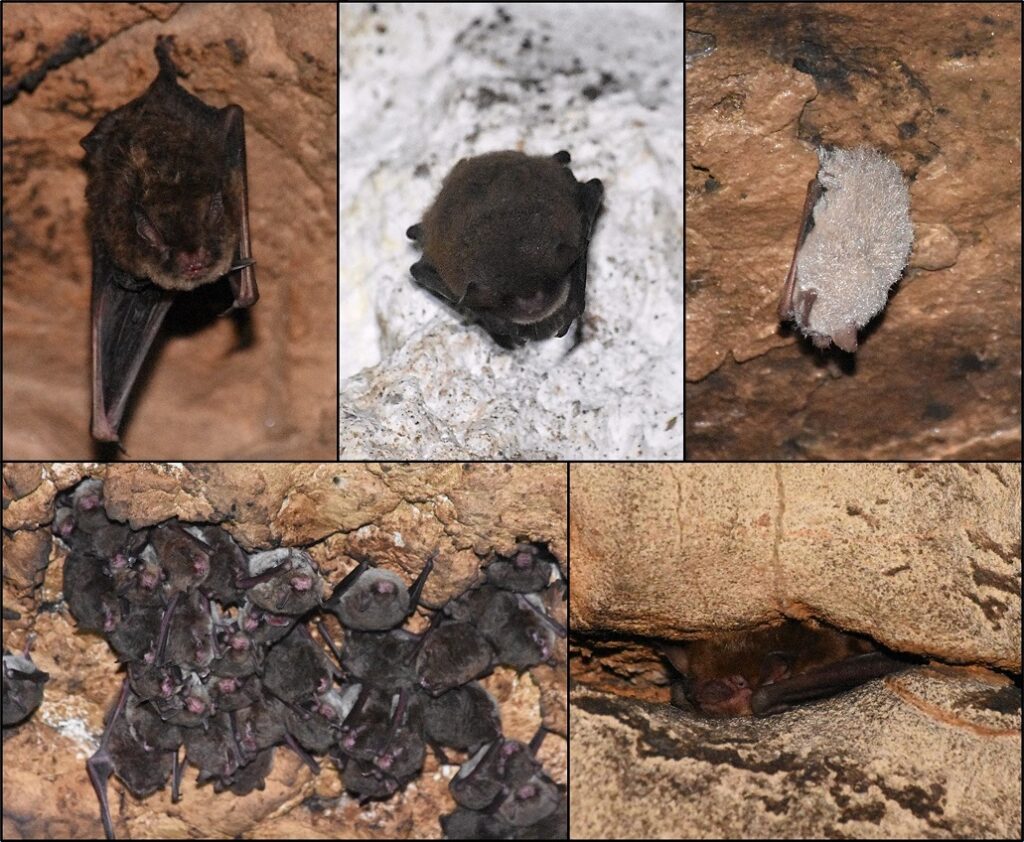
This past weekend, Brittany and I were invited to join a winter hibernacula (winter bat roost) survey with the Illinois Department of Natural Resources alongside partners from multiple institutions across the country, all with the same goal – bat conservation. The purpose of these surveys is to get a count of how many bats, and of what species, are utilizing the caves during the winter. Over the course of two days, we surveyed three inactive mines and one natural cave throughout southern Illinois.
As we approached the first mine, the group began putting on protective equipment – Tyvek suits to prevent the transfer of the white nose syndrome fungus from cave to cave, masks to protect our lungs from the silica dust in the mine, and helmets to shield our heads from any potential falling rocks. The group was split up into two teams, giving everyone a role; there were bat identifiers/counters, a data recorder, a photographer, and a photographer assistant. I was a photographer, my job was to zoom in and take photos of the large clusters of Indiana bats, an endangered species, for counting post-survey since they gather into large groups on the ceiling that can reach over a thousand individuals!

Entering the cave, we were immediately greeted by a small tri-colored bat on the wall. These little bats (one of the smallest species in the state) were the most common bat close to the entrance. As we moved further into the mine we began to see little brown bats mixed in as well, and even one or two endangered northern long-eared bats nestled in the cracks on the wall. Once we were deep into the mine, small clumps of Indiana bats began showing up on the walls and ceilings, eventually giving way to massive clusters of hundreds or thousands of bats.

Since I was the photographer for my team, I got the opportunity to visit the “Bachelor’s Room,” a small area of the mine with a squeezing entrance that I had to lay down to pass through. This separate room was home to the bachelor colony, a group of male Indiana bats that decided to take this spot as their own. Compared to the rest of the mine, it was much warmer and humid, the walls were more heavily stained, and the bats left multiple massive piles of guano several feet high on the ground. Come to think of it, this room wasn’t too far off from some college boys’ apartments that I’ve visited.

The other caves’ bat populations leaned much heavier towards the solitary-roosting tri-colored bats, but also included some little brown bats, northern long-eared bats, a colony of southeastern bats, a few big brown bats, and a handful of small clusters of Indiana bats. The data collected from these surveys, conducted every other year, are important for tracking the status of different bat species throughout time since there are many factors influencing the decline of bat populations. Habitat destruction is a large driver of bat loss, and in the past decade, white nose syndrome, a fungal pathogen, has significantly decreased the populations of many cave-dwelling bat species in Illinois, making this work ever more important. This survey was a great learning experience and was some of my favorite field work I’ve ever done. Being able to see so many bats in one place was truly special, and doing work that helps conserve these species alongside many other like-minded biologists made for a great weekend in the caves.


